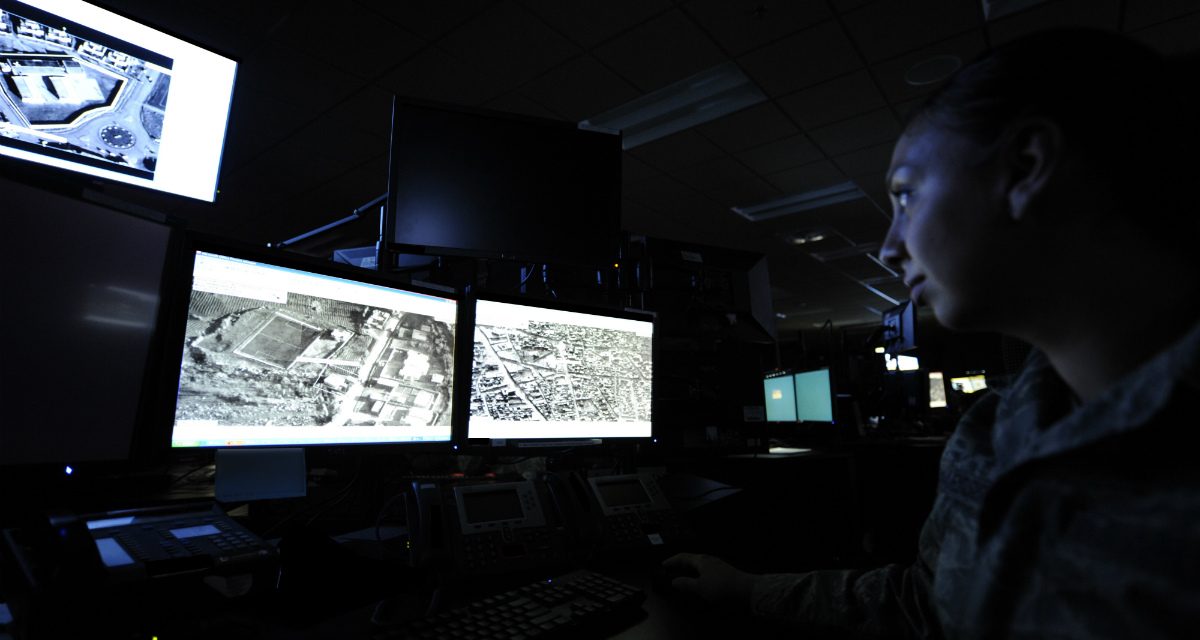“Today, we struck back,” the president said after the United States conducted a military strike against terrorists and their sanctuary. But which president? George W. Bush, who declared war on terrorism after the 9/11 attacks? Barack Obama, who subsequently took charge of that war? Or Donald J. Trump, who carries the mantle today?
Really, it could have been any of the three—but it was none of them. President Bill Clinton uttered those words on August 20, 1998.
Clinton made the statement after ordering a military strike against al-Qaeda training camps in Afghanistan and the al-Shifa pharmaceutical manufacturing facility in Sudan in response to two, nearly simultaneous terrorist attacks perpetrated by al-Qaeda against the US embassies in Kenya and Tanzania that killed twelve Americans (and more than two hundred others). With a foreshadowing of the future to come, Operation Infinite Reach could be seen as the counterterrorism strike that started it all.
But this strike becomes even more remarkable when situated within a broader, historical context.
In 1983, the Reagan administration faced a similar policy challenge when confronted with the question of how to respond to Hizbollah’s terrorist attack against US Marines deployed as part of a multinational peacekeeping mission in Lebanon.
The difference in how the Pentagon, at that time, contemplated the use of force in response to a terrorist attack is unmistakable. Richard Armitage, then a senior appointee in the Pentagon, described using military force as a “feel good” exercise rather than a cogent, decisive military response. And Chairman of the Joint Chiefs Gen. John Vessey found the idea “morally unacceptable” and “beneath” the US military—in reaction to what would have been the first time the United States used force in retaliation for a terrorist attack.
That was then; this is now.
A military-centric, largely standoff approach has seemed to dominate the United States’ counterterrorism policy overseas since 1998. Yet, during this same time period, jihadist groups such as al-Qaeda have evolved and new jihadist groups such as ISIS have come onto the scene and expanded geographically.
Why hasn’t the United States successfully countered terrorist groups at either the strategic or ideological levels? Why has there been a dearth of policy innovation? Does this tell us something about our system, the phenomenon of terrorism itself, or perhaps both?
Terrorism is political by its very nature. Therefore, US counterterrorism policy is not merely an antiseptic response to threats and acts of terrorism. It is an affirmative political action by the state. And as Dr. Martha Crenshaw of Stanford University observes, counterterrorism policy is “a reflection of the U.S. domestic political process . . . involving government institutions, the media, interest groups, and the elite and the mass publics.” Indeed, counterterrorism policymaking in the United States is conducted within a dynamic political process—but also a framework of diffuse power.
Therefore, given the diffuse nature of power within the US political system, one would expect an consequently divergent counterterrorism policy over time. But what we have instead seen is a convergence in US counterterrorism policy, strategy, and approach since 1998—and certainly since 9/11.
This convergence in US counterterrorism policy has been recognized by counterterrorism scholars such as Brian Michael Jenkins, a senior advisor to the president of the RAND Corporation. Jenkins recently stated:
As commanders-in-chief, three presidents have now supervised this [counterterrorism] campaign. George W. Bush, Barack Obama, and Donald Trump have exhibited dramatic differences in rhetoric and style . . . but overall, there has been remarkable continuity in their efforts.
And now, the recently published National Security Strategy—a document that sets the strategic paradigm for the US national security enterprise—reinforces this notion, placing the operationally oriented features of US counterterrorism such as disrupting terror plots, taking direct action, and eliminating terrorist safe havens at the center of US strategy.
This is not unique or new to the current administration. My research of all National Security Strategies, going back to 1998, provides a snapshot of this preference and apparent policy convergence:
- 1998 NSS: “We will spare no effort to bring attackers to justice, ever adhering to our policy toward terrorists that ‘You can run, but you cannot hide,’ and where appropriate to defend ourselves by striking at terrorist bases and states that support terrorist acts.”
- 1999 NSS: “And we seek to eliminate terrorist sanctuaries overseas, counter state support for terrorism, and help other governments improve their capabilities to combat terrorism. . . . As long as terrorists continue to target American citizens, we reserve the right to act in self-defense by striking at their bases and those who sponsor, assist or actively support them.”
- 2000 NSS: “In counterterrorism, because terrorist organizations may not be deterred by traditional means, we must ensure a robust capability to accurately attribute the source of attacks against the United States or its citizens, and to respond effectively and decisively to protect our national interests. U.S. armed forces possess a tailored range of options to respond to terrorism. . . . Overseas, we seek to eliminate terrorist sanctuaries…”
- 2002 NSS: “The struggle against global terrorism is different from any other war in our history. . . . Our priority will be first to disrupt and destroy terrorist organizations of global reach and attack their leadership; command, control, and communications; material support; and finances.”
- 2006 NSS: “The hard core of the terrorists cannot be deterred or reformed; they must be tracked down, killed, or captured.”
- 2010 NSS: “We are at war with a specific network, al-Qa’ida, and its terrorist affiliates who support efforts to attack the United States, our allies, and partners.”
- 2015 NSS: “We have drawn from the experience of the last decade and put in place substantial changes to our efforts to combat terrorism. . . . We are now pursuing a more sustainable approach that prioritizes targeted [kinetic] counterterrorism operations.”
What we generally see throughout these strategy documents is both an operational framing of the problem set as well as a prioritization of the operational features of terrorist groups. What, specifically, explains and drives this “bias for the operational” remains unclear and worthy of deeper research and further inquiry.
To be fair, all of these National Security Strategies also speak in some way to the more strategic features and drivers of the phenomenon of terrorism. But none of them put the strategic features of the terrorism problem set at the center. That said, one of them in particular stands out.
The 2006 NSS provides an interesting break down of the strategic context that underpins and even drives terrorism—none of the other NSS editions since 1998 do so.
In the 2006 NSS, there is a section that rhetorically fleshes out the “battle of ideas,” deconstructing it in this way:
To wage this battle of ideas effectively, we must be clear-eyed about what does and does not give rise to terrorism:
- Terrorism is not the inevitable by-product of poverty. . . .
- Terrorism is not simply a result of hostility to U.S. policy in Iraq. . . .
- Terrorism is not simply a result of Israeli-Palestinian issues. . . .
- Terrorism is not simply a response to our efforts to prevent terror attacks. . . .
The terrorism we confront today springs from:
- Political alienation. . . .
- Grievances. . . .
- Sub-cultures of conspiracy and misinformation. . . .
- An ideology that justifies murder. . . .
Notwithstanding the relative merits of this analysis, one can see that this section of the document intends to speak to the underlying features of terrorism and begins to contemplate, in a grand-strategic way, how to address them. This more robust discussion about the phenomenon of terrorism is unique to the 2006 NSS.
So, what we can begin to see through a snapshot of the NSS over the last twenty years is that the United States has not put addressing the underlying drivers of jihadist terrorism at the center of US counterterrorism policy and strategy.
The battle of ideas; ensuring alignment between the security context and the political context; counter-narratives; regional strategies: All, at best, have largely operated on the periphery of US counterterrorism policy and, at worst, were left unaddressed—giving way (in some ways, understandably) to the urgent operational requirements of eliminating sanctuary, responding to attacks, or preventing the next attack.
Just a couple of years into the fight after 9/11, then commander of US Central Command Gen. John Abizaid coined the term “the long war.” His strategic, long-term framing implicitly acknowledged the underlying drivers of this new counterterrorism fight—a framing that remains relevant in 2018.
Clearly, there is both a need and requirement to use military force against jihadist groups—particularly given both the nature and expansion of the threat as well as the instability such groups have agitated in the greater Middle East and beyond.
But we should not kid ourselves that we are being strategic. Perhaps what we have been doing can best be characterized as doing the same thing and expecting different results.
The “war” against jihadist terrorism will undoubtedly be long. Yet, it will be our failure to innovate in our counterterrorism policy that could make the “long war” truly the forever war.
Image credit: Senior Airman Dana Hill, US Air Force



you suppose to mention the failures in fighting terrorism.